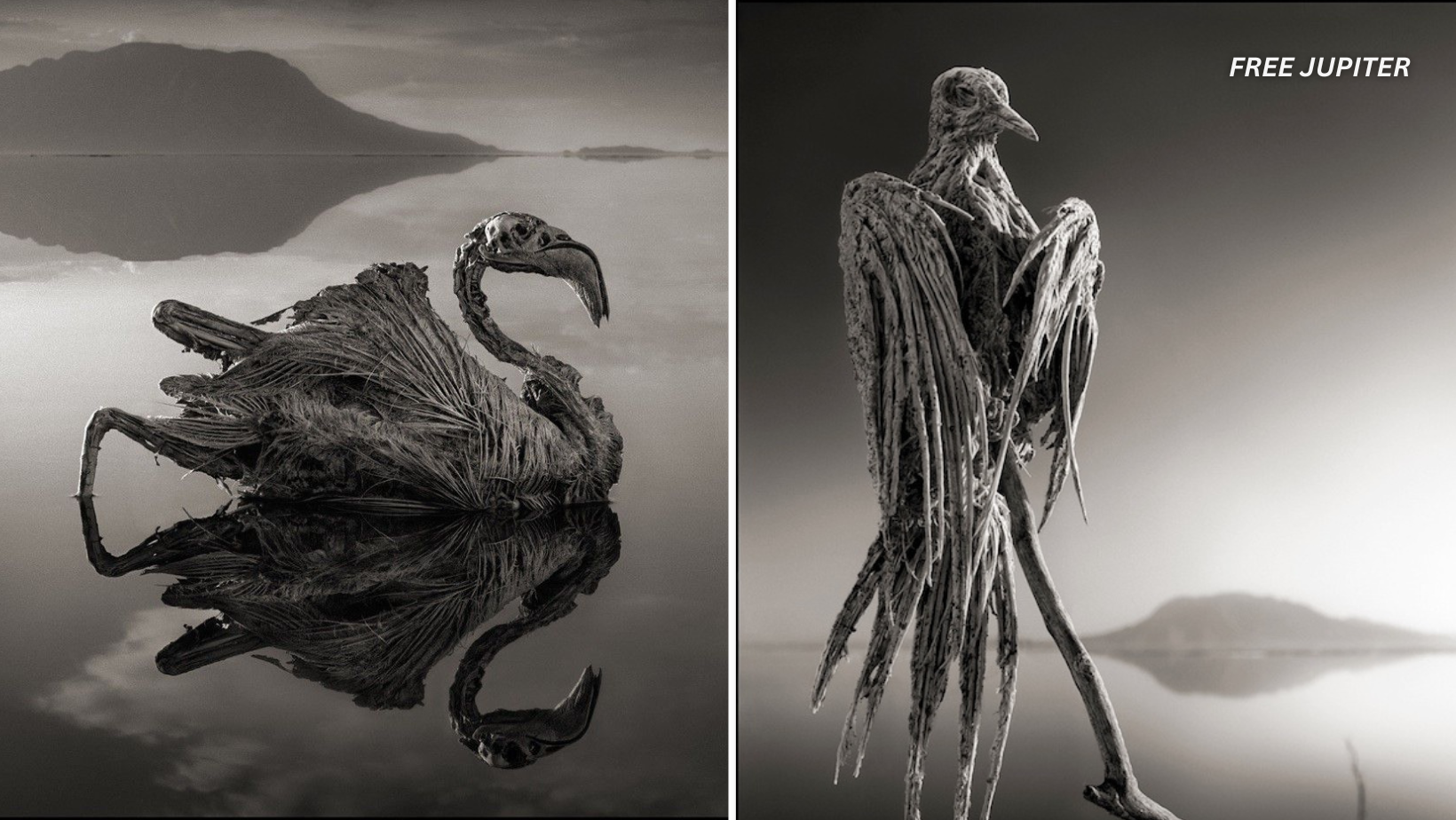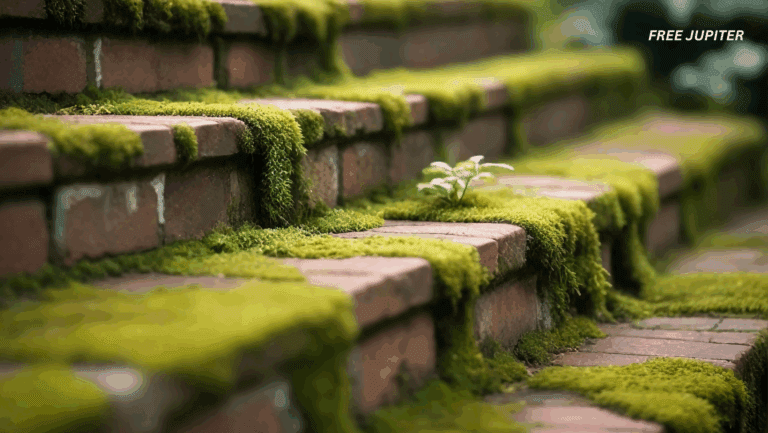In northern Tanzania, tucked between the volcanic Ol Doinyo Lengai and the Kenyan border, lies one of Earth’s strangest natural wonders. Lake Natron looks calm on the surface, but beneath its crimson waters lies a deadly chemical secret. This highly alkaline lake is known for preserving creatures in eerily life-like poses, turning them into statues after death. While most lakes support life, this one turns it into haunting art.
Why Lake Natron Is So Alkaline
Lake Natron gets its name from “natron,” a mineral blend of sodium carbonate and baking soda. This mineral comes from the nearby volcano and the surrounding hills. Runoff carries these compounds into the shallow lake, where evaporation intensifies the chemical mix. The result is water with a pH as high as 12, hotter than bathwater, and caustic enough to cause burns.
The combination of high temperatures, extreme alkalinity, and intense mineral content makes this lake one of the most inhospitable environments on Earth. But that same harshness is exactly what preserves dead creatures with uncanny detail.
How the Water Turns Creatures Into Statues
When creatures fall into the lake, the water draws moisture from their bodies. Because of the intense salt and soda content, decay doesn’t occur as it would in freshwater. Instead, their bodies are slowly mineralized and hardened. The lake’s waters essentially mummify them, freezing them in their final positions.
Birds are especially vulnerable. Many mistake the reflective surface for a safe landing spot. Once they touch down, the sticky, corrosive water coats their feathers, grounding them. Within hours or days, their bodies become preserved by the lake’s minerals, making them look sculpted, not decomposed.
Read More: Someone Put A Shark Statue At The Bottom Of A Lake And It’s Seriously Freaking Divers Out
The Most Common Victims
The most frequent victims are small to medium-sized birds, like swifts, doves, and flamingos. Flamingos, however, are unique. While adult flamingos can tolerate the lake’s extreme environment, chicks and other species often cannot. Other unfortunate creatures include bats, insects, and even small mammals that stray too close to the lake.
These calcified bodies are sometimes washed ashore. When they are discovered, they are still perfectly formed, retaining their posture and shape as if frozen in time. The sight is both beautiful and eerie, a blend of life and death suspended by nature itself.
The Flamingos That Thrive Here
Despite its reputation, Lake Natron is one of the most important flamingo breeding grounds in the world. Lessers’ flamingos, in particular, have adapted to thrive here. They build nests on islands made of salt and mud in the middle of the lake, safe from land predators.
Flamingos feed on spirulina, a type of cyanobacteria that grows in alkaline water. This diet gives them their pink hue and sustains them through their nesting season. These birds are among the few creatures that have developed the tolerance needed to survive Lake Natron’s extreme chemistry.
Nick Brandt’s Chilling Photographs
Photographer Nick Brandt captured global attention with images of Lake Natron’s preserved creatures. During his travels, he found calcified birds and bats, still intact. He gently repositioned them on branches and rocks for portraits, which highlighted their almost sculptural forms.
His photography series “Calcified” shows the animals in haunting detail. Some look as if they are alive. Others seem frozen mid-flight or mid-screech. These images sparked conversations around the world and brought Lake Natron’s unique chemical processes into the spotlight.
Cultural Beliefs About the Lake
The Maasai people, who live near the lake, have long regarded it with awe. In their culture, Lake Natron is sacred. The appearance of preserved creatures is interpreted as a warning from spirits. Myths tell of animals cursed for disobedience or punished by nature itself.
These stories add to the lake’s mystery. Locals report strange sounds and lights near the water. Whether based in science or legend, the lake’s ability to turn creatures into statues continues to inspire fear and respect.
The Role of Chemistry in Preservation
The real science behind the preservation process is both fascinating and brutal. Sodium carbonate, once used by the ancient Egyptians for mummification, is the key agent. This compound helps dehydrate organic tissue, effectively halting the decomposition process.
Combined with baking soda and high salt content, the lake acts like a natural embalming fluid. The bodies of dead creatures are encased in layers of minerals, hardened by the sun. Within days or weeks, they become statues that look startlingly lifelike.
Why Scientists Study the Lake
Lake Natron provides valuable insight for scientists interested in extremophiles, life forms that survive in extreme environments. Bacteria and algae living in the lake thrive under conditions that would kill most known organisms. Studying these can help researchers understand how life might survive on other planets.
Astrobiologists have compared Lake Natron to what might exist on Mars or Jupiter’s moon Europa. If life can adapt to Lake Natron, it might also adapt elsewhere in the solar system. Researchers also analyze how the lake changes over time, using satellite images and field data to track water chemistry and temperature.
Threats to the Ecosystem
Despite its harshness, Lake Natron’s ecosystem is delicate. Proposals to build soda ash factories near the lake have raised alarms among conservationists. Extracting minerals from the lake could alter water chemistry, destroying breeding grounds for flamingos and other resilient creatures.
Environmental groups like BirdLife International and the Ramsar Convention have spoken out against industrial development. They argue that protecting Lake Natron safeguards not just a unique natural phenomenon but also essential biodiversity.
Ecotourism and Local Economy
In recent years, interest in Lake Natron has led to an increase in ecotourism. Tourists visit to witness its crimson waters and calcified creatures. Guided tours offer hikes to nearby waterfalls and wildlife areas, helping support the local economy.
Tour operators stress responsible tourism. Visitors are advised not to touch or disturb preserved animals. Guides explain the lake’s environmental importance and encourage respect for its cultural and ecological value.
What Visitors Can Expect
The lake is best viewed during the dry season, when mineral concentrations are highest and flamingos are nesting. From a distance, the lake’s surface shimmers red and orange. Up close, salt flats stretch for kilometers, creating a landscape unlike any other.
Visitors are required to wear protective gear when venturing near the shore. Even a small splash can cause skin irritation. Proper footwear, gloves, and avoidance of direct contact with the water are essential for safety.
Lake Natron Compared to Other Alkaline Lakes
Lake Natron is one of several alkaline lakes around the world, but none match its ability to preserve dead creatures so vividly. Lake Magadi in Kenya and Lake Van in Turkey also contain high salt levels, but they do not calcify animals. Lake Retba in Senegal is famous for its pink color but poses little threat to life.
Mono Lake in California has alkaline properties and hosts brine shrimp, but its waters do not mummify creatures. Lake Natron’s specific mineral balance, shallow depth, and extreme evaporation make it unique in both appearance and effect.
Clearing Up Myths
Many online stories exaggerate Lake Natron’s effects. Contrary to viral claims, animals do not turn to stone instantly. They die from exposure, and the preservation process takes time. The lake doesn’t petrify, it dehydrates and mineralizes. The result is still remarkable, but not magical.
Understanding the science behind the phenomenon helps prevent misinformation. What’s really happening is just as interesting, and far more grounded in biology and chemistry.
Creatures That Do Survive
While most creatures perish upon contact, some microscopic life forms thrive. Alkaliphilic bacteria, salt-resistant algae, and certain crustaceans have evolved to live in this harsh environment. These organisms form the foundation of a food web that includes flamingos and migratory birds.
These surviving creatures are key to scientific research. Studying them may lead to breakthroughs in genetics, medicine, and environmental science.
Conservation Wins and Hope for the Future
Public pressure has helped pause harmful industrial plans. Conservation campaigns have been successful in rallying international support. Tanzania has begun working with environmental NGOs to promote long-term protection of Lake Natron.
Local education programs now teach children about the lake’s importance. Ecotourism initiatives create jobs while preserving the environment. These efforts show that sustainable development is possible with planning and community involvement.
Read More: Scientists May Have Found a Hidden Energy Source That Could Power Earth for 170,000 Yeas
Why Lake Natron Still Matters
Lake Natron is a reminder that nature is full of surprises. Its ability to preserve dead creatures is more than a scientific curiosity, it’s a lesson in balance, adaptation, and respect. As climate patterns shift and industrial pressures rise, preserving such unique places becomes even more important.
It’s not just about saving flamingos or microbes. It’s about understanding how ecosystems function under extreme conditions. Lake Natron challenges assumptions about where life can thrive, and what happens when it doesn’t.
A Place Where Nature Sculptures Life and Death
Lake Natron is a place of extremes. It supports flamingos while calcifying other creatures. It sustains unique bacteria while killing most that enter. Its red waters attract awe, fear, and fascination. The preserved statues of birds and bats lining its shores are not just eerie, they are educational.
This lake is a powerful example of nature’s complexity. By respecting its chemistry, honoring its cultural roots, and protecting its fragile life forms, we ensure that Lake Natron continues to astonish future generations.










